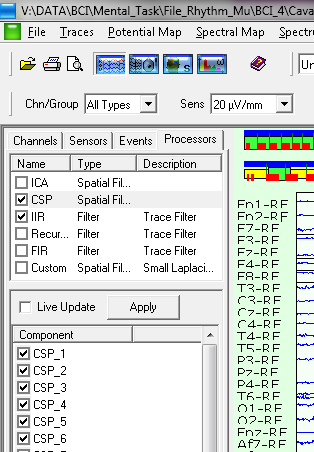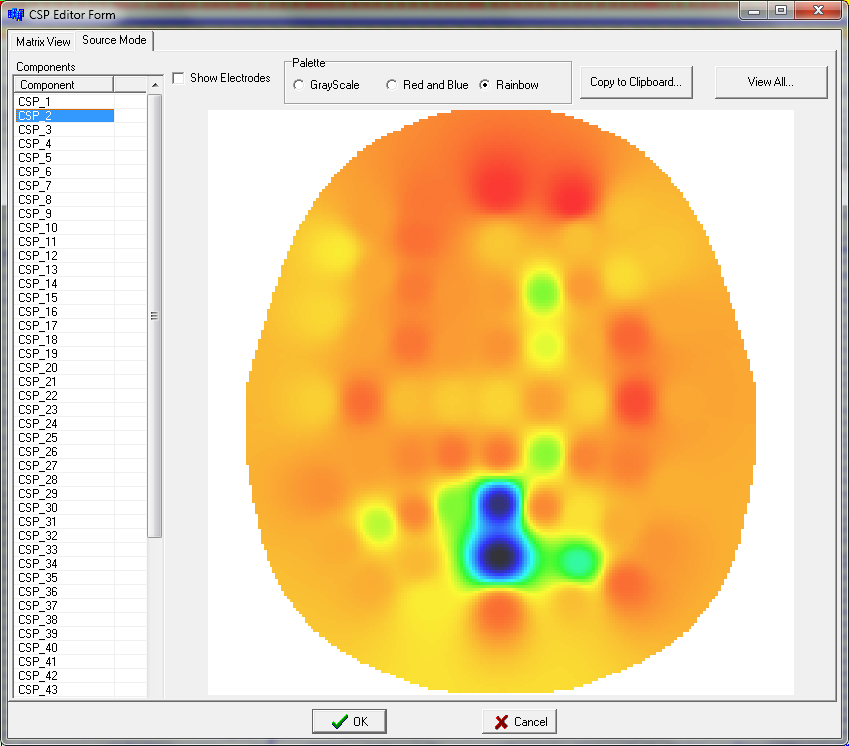The Common Spatial Pattern Tool allows to perform the Common Spatial Pattern decomposition and to store the results of the analysis (a matrix) into a NPX file.
Then, you can load the computed weights by the NPX Lab software tools and CSP can be easily visualized and all the NPX Lab Suite processing can be performed on these signals. In fact, it is possible to perform spectral and statistical analyses on sources, compute averages with the ERP viewer, etc… After the Common Spatial Pattern Tool has stored CSP weights into a NPX File, the CSP processors is available on the Traces/Averages Processors Sidebar:

Note that initially its relative checkbox is deactivated, meaning that CSP components are not computed (they can be displayed, but they will appear as a null signal). CSP components are internally treated as if they were new acquired sensors (virtual sensors, meaning that they are not real sensors such as the EEG ones). The reason why into a NPX file are not stored the CSP components but just its weights is that the NPXLab tool allows you to selectively decide which component can be removed from your signals and instantaneously see how they change!
By double clicking on the CSP item in the same processors list you activate the CSP editor which allows you to see, component by component, how they are weighted over the scalp:

This is very useful to deduce the physiological or noise component they represent.
Usually one wants to remove some noise sources from the signals by means of the visual inspection of the components.
To see the CSP components, you have to:
1) check the CSP checkbox among the processors list. This will enable the computation of the CSP components from the original acquired signals.
2) select the components (again, check the checkbox) that you want to visualize from the channel sensors sidebar

Now you can visualize the CSP components and decide which one to include/exclude from the acquired signals, in the same way as for the ICA analysis.
CSP components can be “removed” from EEG data: once one has identified a noise source (e.g. eye movements) it can be subtracted from the EEG data, thus cleaning them.
Created with the Personal Edition of HelpNDoc: Write EPub books for the iPad